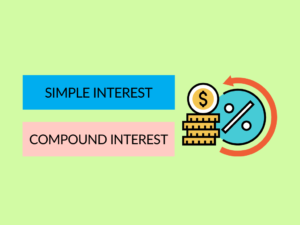What is APR?
APR stands for Annual Percentage Rate. It is a measure used to represent the yearly cost of borrowing, including interest rates, fees, and other costs associated with a loan or credit card. Essentially, it is the true cost of borrowing expressed as a percentage.
Examples of APR
Let’s consider a few examples to better understand APR:
- Example 1: You are applying for a personal loan with an APR of 8%. If you borrow $10,000, the total cost of borrowing for a year would be $800 (8% of $10,000).
- Example 2: You have a credit card with an APR of 18%. If you have an outstanding balance of $1,000 for a year, the interest charged would be $180 (18% of $1,000).
- Example 3: You are considering a mortgage with an APR of 4.5%. If you borrow $200,000, the cost of borrowing for a year would be $9,000 (4.5% of $200,000).
Uses of APR
APR is a useful tool for borrowers to compare different loan options and understand the overall cost of borrowing. It allows individuals to make informed decisions when choosing between different lenders or credit products. Additionally, lenders are required by law to disclose the APR associated with their loan products to ensure transparency and protect consumers.
What is APY?
APY stands for Annual Percentage Yield. It is a percentage that represents the real rate of return on an investment or deposit account. APY takes into consideration compounding interest, which means it reflects the effect of reinvesting previously earned interest to earn additional interest over time.
Examples of APY
Let’s explore a few examples to better understand APY:
- Example 1: You deposit $1,000 in a savings account with an APY of 5%. Over the course of a year, your balance would grow to $1,050, including both the initial deposit and the interest earned.
- Example 2: You invest $10,000 in a certificate of deposit (CD) with an APY of 3%. After a year, your investment would grow to $10,300, including both the initial amount and the interest earned.
- Example 3: You put $5,000 in a high-yield savings account with an APY of 2.5%. At the end of the year, your balance would be $5,125, including both the initial deposit and the interest earned.
Uses of APY
APY is particularly relevant for individuals looking to grow their savings and make informed decisions about investment accounts. It helps account holders understand the potential returns on their savings and allows them to compare different savings and investment options available in the market. Understanding APY can assist in maximizing the earnings from savings and investments.
Differences between APR and APY
| Difference Area | APR | APY |
|---|---|---|
| Definition | Annual Percentage Rate is the cost of borrowing, including fees and interest, expressed as a yearly percentage. | Annual Percentage Yield is the real rate of return on an investment or deposit account, taking into account compounding interest. |
| Inclusions | APR includes fees, interest, and other charges associated with borrowing. | APY includes the compounded interest earned on an investment over a given period. |
| Calculation Method | APR is primarily calculated based on the interest rate and fees. | APY takes into account compound interest, which reflects the effect of reinvesting previously earned interest. |
| Representation | APR is typically represented as a lower percentage compared to APY. | APY is generally higher than APR as it considers compounded interest. |
| Application | APR is commonly used in loans, mortgages, and credit cards. | APY is frequently used in savings accounts, certificates of deposit (CDs), and other investments. |
| Consumer Protection | Laws mandate lenders to disclose APR to consumers to ensure transparency and protect their interests. | No specific laws require disclosure of APY to consumers, but financial institutions often provide this information. |
| Focus | APR focuses on borrowing costs and allows borrowers to compare different loan options. | APY focuses on investment returns and helps individuals make informed decisions about savings and investments. |
| Compounding | APR does not take into account compounding interest. | APY specifically incorporates compounding interest into the calculation. |
| Time Frame | APR represents the yearly cost of borrowing. | APY represents the yearly rate of return on an investment. |
| Examples | 8% APR for a personal loan with a borrowing amount of $10,000 would result in a yearly cost of $800. | 5% APY on a savings account with a deposit of $1,000 would bring a total balance of $1,050 at the end of the year. |
Conclusion:
In summary, APR and APY are both important financial terms used to measure costs and returns. While APR focuses on borrowing costs and allows for loan comparisons, APY concentrates on investment returns and helps individuals evaluate choices for savings and investments. Understanding the differences between these two metrics can empower individuals to make informed financial decisions that align with their specific needs and goals.
People Also Ask:
-
What is the difference between APR and APY?
APR represents the annual cost of borrowing, while APY reflects the annual return on investments. APR includes fees and interest, while APY incorporates the effects of compounding interest. -
Is APR and interest rate the same thing?
No, they are not the same. While the interest rate is the percentage charged on the loan, APR includes other charges, such as fees, making it a better representation of the total cost of borrowing. -
Which is more important, APR or APY?
The importance of APR or APY depends on the context. For borrowing decisions, such as loans or credit cards, APR is crucial. For investment decisions, APY guides individuals in evaluating potential returns on savings and investments. -
What factors can affect APR and APY?
Factors that can impact APR include interest rates, fees, credit scores, and loan terms. On the other hand, factors affecting APY include interest rates, compounding frequencies, and investment duration. -
How can I calculate APR and APY?
APR can usually be found in the loan or credit card agreement. APY can be calculated using a formula that considers the interest rate, compounding frequency, and the number of compounding periods in a year.



